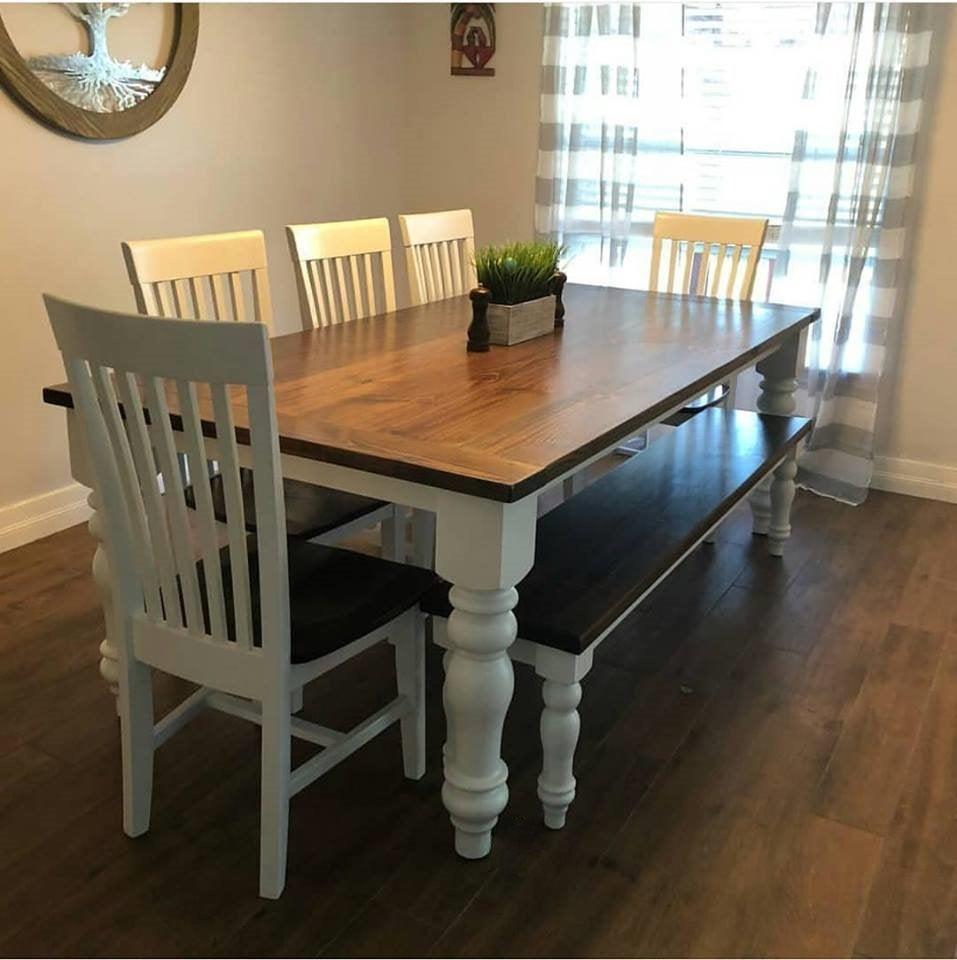Dining Room Table Legs: What to Think about Prior To You Get
Dining Room Table Legs: What to Think about Prior To You Get
Blog Article
A Thorough Appearance at Table Leg Styles: Finding the Perfect Suit
Choosing the best dining table leg design is critical for both aesthetic charm and practical functionality. Typical four legs supply timeless sophistication and stability, while the pedestal base offers boosted legroom and a modern-day appearance. For those with larger tables, trestle legs ensure durable assistance, whereas barrette legs introduce a mid-century contemporary ambiance with their minimalist layout. The x-shaped legs mix modern style with improved security. Each of these alternatives brings unique advantages, making the selection greater than just a matter of preference. Explore even more to uncover which design completely matches your eating room and way of life.
Conventional 4 Legs
Among the numerous kinds of eating table leg styles, the typical four-leg design remains a timeless option for lots of homes. This traditional setup uses a harmonious blend of capability and aesthetic appeals, making it a seasonal favorite. 4 legs provide well balanced assistance, ensuring the table remains secure and with the ability of bearing substantial weight. This is especially useful for homes that often organize huge celebrations or use their table for numerous objectives, such as job or crafting.
From an aesthetic point of view, the standard four-leg style can be conveniently adapted to numerous interior styles. Whether crafted from wood, metal, or a combination of materials, these legs can be delicately carved, streamlined and minimalistic, or anything in between. Their adaptability permits them to match both rustic and contemporary settings seamlessly.
Moreover, the uncomplicated framework of the four-leg layout helps with simplicity of motion and positioning within an area. Unlike more complex bases, this style minimizes blockages, giving sufficient legroom for restaurants. In summary, the conventional four-leg table leg style marries sustaining style with useful capability, making it an astute choice for those looking for both form and function in their dining furnishings.
Stand Base
Commonly celebrated for its stylish and space-efficient style, the stand base is a distinguished alternative to the standard four-leg configuration in eating table leg styles. Without edge legs, diners are afforded better freedom of movement, making it a suitable selection for round and oblong tables that promote even more intimate and comprehensive events.
The central column itself offers a canvas for detailed designs and artistic expressions, including an element of visual interest below the table. In recap, the stand base combines capability with style, making it a fine-tuned and useful choice for varied eating settings.
Trestle Legs
Trestle legs give a robust and timeless structure for dining tables, defined by their straight cross-bracing and strong support light beams. Originating from medieval times, this design has actually developed yet kept its vital framework, making it a perennial fave in both standard and modern setups. The central trestle light beam, usually supported by 2 or even more upright articles, provides phenomenal stability, permitting bigger table sizes without the need for extra legs.
A considerable benefit of trestle leg tables is the ample legroom they use. index Unlike tables with 4 edge legs, the lack of obstructions at the table's edges offers unimpeded space for chairs and diners, improving comfort and accessibility. This makes trestle tables optimal for accommodating larger events, whether in an eating room or a banquet hall.
The visual convenience of trestle legs is significant. Available in a selection of products such as timber, metal, and composite, they can be ended up to match a large range of interior styles. From rustic farmhouse to streamlined modern-day layouts, trestle legs can be personalized to page match specific preferences. Their enduring allure and practical benefits make trestle legs a compelling choice for those looking for both style and usefulness in their dining table.
Barrette Legs

The appeal of barrette legs hinges on their simpleness and versatility - dining room table legs. Offered in a series of materials, including steel and brass, they can be completed in many colors to enhance different indoor designs. Whether coupled with a rustic wood table top or a modern glass surface area, hairpin legs easily mix performance with a touch of vintage appeal
Resilience is another notable look at here now attribute of barrette legs. In spite of their fragile appearance, these legs are crafted to bear significant weight, guaranteeing the table continues to be secure and safe and secure. Additionally, they are reasonably easy to mount, making them a preferred choice for DIY fanatics and specialist furniture manufacturers alike.
X-Shaped Legs

Constructed from materials such as steel, wood, or a combination of both, X-shaped legs can be customized to match various style choices. Steel legs often offer a streamlined and commercial feel, perfect for loft-style houses and modern-day eating rooms.
Moreover, the engineering behind X-shaped legs makes certain even weight circulation, minimizing the danger of wobbling and improving longevity. This makes them especially well-suited for bigger table that call for extra support. Fundamentally, X-shaped legs blend sensible design with modern aesthetics, making them an ageless option for varied dining settings.
Conclusion
A comprehensive understanding of eating table leg designs exposes the distinct attributes and advantages of each layout. Standard 4 legs offer security and timeless appeal, while stand bases give legroom and a structured look. Trestle legs make sure durable support for larger tables, and barrette legs introduce a mid-century modern-day aesthetic. X-shaped legs incorporate contemporary style with enhanced security. Picking the suitable leg style makes sure both functional and visual complete satisfaction in any eating room.
Report this page